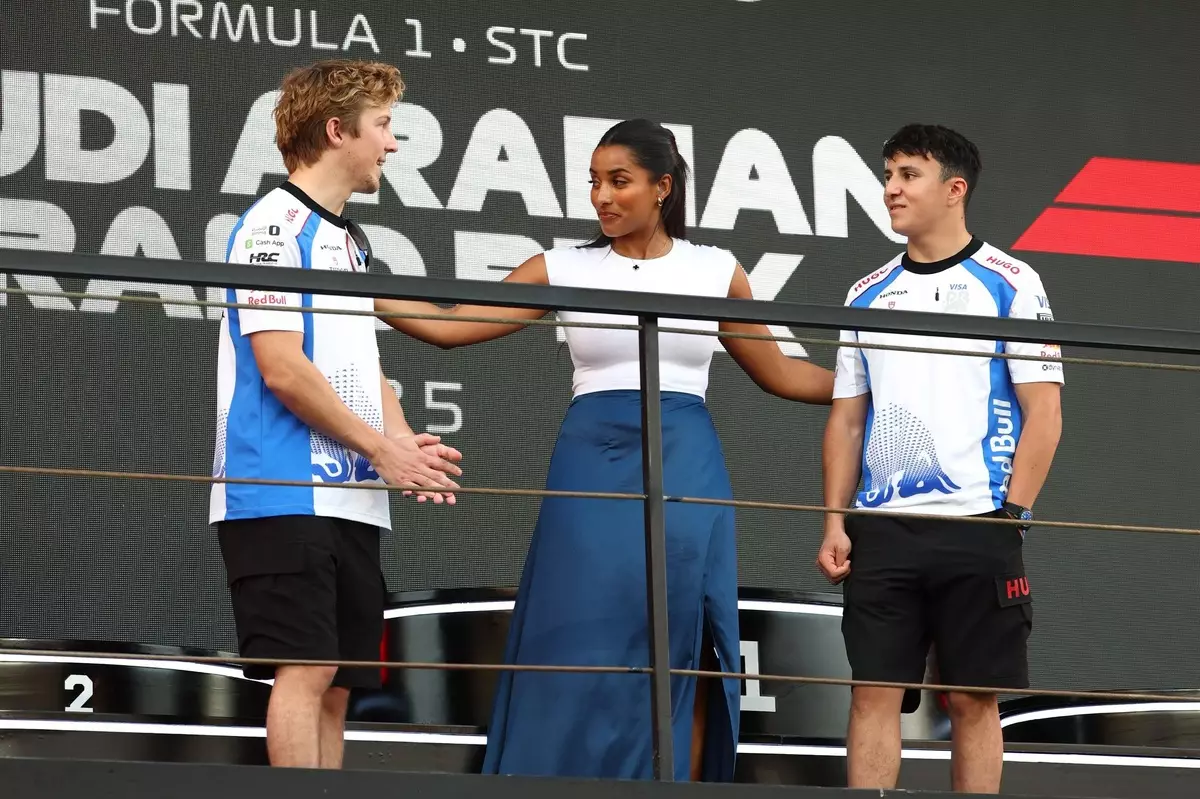In the high-octane world of Formula 1, adaptability is key, especially when young drivers transition between teams or face challenging seasons. Isack Hadjar and Liam Lawson’s recent performances with the Faenza-based Racing Bulls team serve as a salient case study in the dynamics of teamwork, competition, and personal growth within this exhilarating sport. Lawson, despite a frustrating demotion from the Red Bull Racing team, appears to have rebounded effectively, exhibiting commendable speed and intensity in the most recent Saudi Arabian Grand Prix. His ability to seize the moment reflects not only his driving prowess but also his understanding of the sport’s emotional complexities.
Hadjar, a rookie who has made his presence felt, stands as a contrasting yet complementary force within the team. The camaraderie between these two drivers is palpable; they push each other to excel, creating an environment that fosters development and improvement. Lawson’s marginal edge in qualifying—outpacing Hadjar by a mere 0.010 seconds—is a testament to their friendly rivalry, highlighting how competition within the same team can elevate performance levels.
Race Strategies: The Balancing Act
Strategy plays a critical role in Formula 1, and both drivers encountered differing fates in the race due to their tire choices and unfortunate scenarios. Lawson’s endeavor to follow the prevailing strategy proved less than fruitful, with overtakes often leading to a battle rather than a clear path to success. For a driver like Lawson, who has experienced the pressure of top-tier racing, the lesson learned is invaluable: adaptability extends beyond just quick reflexes on the track; it requires an acute ability to adjust strategies mid-race.
The frustration expressed by Lawson post-race regarding his inability to secure points despite an impressive overtaking display underscores the often-merciless nature of Formula 1. Racing is not solely about raw speed but also keenly understanding how to navigate unforeseen circumstances. His poignant reflection on racing against time to establish a gap from rivals highlights the mental and emotional burdens placed on drivers, particularly when the stakes are so high.
Hadjar, in contrast, showcased tactical wisdom with a well-executed hard-medium tire strategy, finishing in a respectable 10th place, albeit with a tinge of disappointment for not earning more points. This juxtaposition of experiences emphasizes the different journeys that drivers undertake within the same competitive framework. Hadjar’s frustration in being unable to overtake seasoned competitors late in the race underlines the need for continual learning, patience, and strategic foresight—a sentiment invaluable for the struggling rookie.
From Setbacks to Comebacks
The fierce landscape of Formula 1 not only tests mechanical limits but also the resilience of young drivers. Hadjar’s ability to bounce back after a calamitous debut in Australia signifies immense character. His enthusiasm for racing lights a spark that could ignite a promising career, provided he continues to harness this passion effectively amid setbacks. Formula 1 can often feel like a gauntlet where each race is fraught with highs and lows, testing patience and skill—qualities that Hadjar seems to embody.
Such resilience is mirrored in Lawson’s story; despite his challenges, he has chosen to reinvent himself within the structure of Racing Bulls. His acknowledgment that he is getting „stronger“ paints a portrait of a driver not merely resigned to past failures but actively working to learn and grow. This attitude is crucial in a sport where potential can slip away just as fast as it is acquired.
The Road Ahead: Learning and Evolving
Both Hadjar and Lawson share an optimistic view towards future races, particularly with Miami on the horizon. Recognizing the current limitations of their cars, they exhibit a forward-thinking approach that is essential for athletes at this level. The commitment to improving race strategies and performance is integral in staying relevant within the rapidly advancing world of Formula 1.
The dynamic between Hadjar and Lawson is emblematic of the trials and triumphs of emerging talent in a sport defined by pressure and prestige. Their willingness to collaborate, compete, and evolve not only serves their ambitions but also continues to contribute to the rich tapestry of Formula 1’s ever-changing narrative. It’s this spirit of innovation, learning, and resilience that makes the journey of young drivers like Hadjar and Lawson worth following as they navigate the thrilling and turbulent tracks of their careers.


Napsat komentář